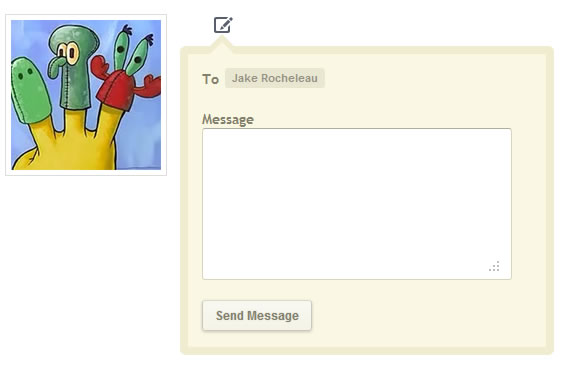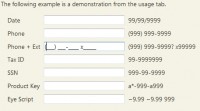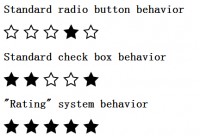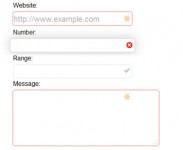Stylish Messaging Modal Box with jQuery

You can build some really neat things using jQuery. The latest release bundle updates a lot of bugs and even hints at support for a new jQuery Mobile. With frontend scripting you can build practically any type of web application. But more specifically we’ll be looking into constructing a small modal box window.
I have designed the functionality to look and feel like a private messaging solution. This is perfect to implement on a user profile page or author’s page in a blog. We will be using some handy CSS3 techniques along with coding the page structure in HTML5. You don’t need to be a master jQuery artist to understand this tutorial, but it wouldn’t hurt to brush up on the basics.
The HTML Structure
Before we dive into jQuery let’s examine a bit of the HTML first. If you’re interested in examining the whole document layout I suggest downloading from the source code. But I’d like to focus on the modal box HTML code for further explanation.
I split the template using HTML5 <section> tags. Inside I have a div with the class .containmsg which holds our modal box and button to show/hide the contents. The modal container uses the class .mainCompose. This is also how we target in jQuery – let’s look at the HTML code for this below.
<!-- begin modal msg box --> <div class="containmsg"> <p><img src="img/compose.gif" alt="compose" class="compose" /></p> <div class="mainComposeD"> <div class="calloutUp"> <div class="calloutUp2"> </div> </div> <div> <form name="sendprivatemsg" action="#" method="post"> <label for="tofield">To</label> <ul class="userslist clearfix"> <li><a href="http://designshack.co.uk/author/jakerocheleau/" target="_blank" class="recipient">Jake Rocheleau</a></li> </ul> <div class="break"></div> <label for="mymsg">Message</label> <textarea name="mymsg"></textarea> <p>**Enter some text!</p> <div><a class="sendbtn">Send Message</a><img src="img/ajax-loader.gif" class="loader" /></div> </form> </div> </div> </div> <!-- @end modal -->
Inside our form element there aren’t any surprises. A small label and input message field. Also a to: field with a link to the user’s page. In this demo I linked to my DesignShack author page. It’s not required, though. You could even remove the link altogether and still keep the CSS styles in-tact. The users list is coded as a UL element so you could support messaging to more than one person.
Now before we dive into jQuery there’s one more technique I wanted to cover. If you click the compose icon you’ll notice our modal box has a small triangle tip at the very top. You could use images for this technique, but there is a simpler alternative using strictly CSS.
Cool CSS Tooltip Triangles
There is a small div which appears directly above the message form. This contains two classes labeled calloutUp and calloutUp2. The former behaves as a continuation of our outer border (the darker tan) while the latter connects to the center of our form area. Using both we can create matching triangles in a tooltip style connector.
This works because of a setting in CSS that makes all borders come together in center as a triangle. So we can set both of these divs to have no height or width, but massive borders. If we only give color to one of the borders and the rest are transparent we create the triangle effect seen here. Check out the CSS classes for both of the callouts.
.calloutUp { height: 0; width: 0; border-bottom: 12px solid #f0ecd0; border-left: 12px dotted transparent; border-right: 12px dotted transparent; left: 0px; top: 0px; margin-left: 30px; z-index: 10; }
.calloutUp2 { position: relative; left: -12px; top: 8px; border-bottom: 12px solid #faf7e3; border-left: 12px dotted transparent; border-right: 12px solid transparent; z-index: 11; }
I’m also setting details for the surrounding borders because this keeps the div block looking square. Otherwise our shape would turn rectangular, and then our triangles would come out lopsided with jagged edges. The z-index property is also important so that our inner tip will stay above the outer tip. The other styles are used to mockup our fonts in the demo example, certainly nothing extraordinary.
Developing Interactions with jQuery
Now we can delve into the good stuff! If you have used jQuery before you’ll likely be familiar with starting off a new document. First include the latest version of jQuery into your page. If you don’t wish to download and host the file yourself Google offers all versions of jQuery live for developers. The latest I’m using is library 1.6.2 mini.
Once that’s included you should open another script tag for JavaScripting. I decided to write my code within the head block of the same HTML page. But you could alternatively move this to the body, footer, or even into an external file. The first snippets of code I’ve added below.
$(document).ready(function() {
$(".mainCompose").hide();
$('.loader').hide();
$('#errortxt').hide();
$('.compose').click(function() {
$('.mainCompose').slideToggle();
});
});
We call our $(document).ready() function to hold off on any actions until the page is finished loading. The first task is to hide 3 page elements right away. These are .mainCompose to hide our modal box, .loader to hide the ajax loading gif, and #errortxt which only displays if the user hasn’t entered anything and tries to submit the form. Each of these elements will only be displayed under certain conditions so it’s best to keep them hidden immediately.
And finally our first scripting action is checking for a click event handler. The .compose class is actually tied to our compose image even though there is no anchor link to be clicked. jQuery can handle the click events and call slideToggle() either way. Now the last bit of code to examine is how we can pull data out from user input.
Processing the Modal Form
We are only checking for one more final event handler. This is tied to the click event of our .sendbtn, which is actually tied to an anchor link in our modal box. Directly next to this is our animated ajax .gif image which was hidden right after the page loaded.
$('.sendbtn').click(function(e) {
e.preventDefault();
$('.sendbtn').hide();
$('.loader').show();
if($('#mymsg').val() == "") {
$('#errortxt').show();
$('.sendbtn').show();
$('.loader').hide();
}
else {
$('sendbtn').hide();
$('.loader').show();
$('#errortxt').hide();
var formQueryString = $('#sendprivatemsg').serialize(); // form data for ajax input
finalSend();
}
The execution function right after our button is click now has a parameter. function(e) just passes the instance of our click event right into the function as a variable. We use this event selector to call the preventDefault() method so that our link doesn’t behave as a link. We also immediately hide the .sendbtn and replace it with our .loader image.
Next we pass into a standard if/else clause checking the #mymsg textarea value. If this contains no text then we know the user hasn’t entered anything. In this case we display our error message and re-hide the loading image while displaying our button again. Otherwise we enter the else{ } clause which assumes we can send the message!
I haven’t written any Ajax/PHP code since it jumps out of range of this tutorial. But you should check out the jQuery ajax() function which can speed up backend development tenfold. I have set aside a variable formQueryString which can be used to pass the form data into an Ajax call. Instead I’ll be just finishing up the aesthetics in a small function finalSend();
// possibly include Ajax calls here to external PHP
function finalSend() {
$('.mainCompose').delay(1000).slideToggle('slow', function() {
$('#composeicon').addClass('sent').removeClass('compose').hide();
// hide original link and display confirmation icon
$('#composebtn').append('<img src="img/check-sent.png" />');
});
}
});
What we want to do now is close our modal box and display a small check icon to let the user know everything is fine and dandy. I’ve used .delay() to keep the modal box open for 1 second before calling our final slideToggle() method. This was added solely for appearances in this tutorial so you can see how it looks waiting for the server to load. If you want to keep your users waiting an extra second you could leave this – but it serves little point otherwise!
After the slide animation I’ve added a callback function. It only includes 2 lines of basic code. First we target the compose icon and change its class from .compose to .sent, then hide it from view. Finally we target #composebtn which is the container div of our icon and append a new check mark icon. Now our users know the message was sent and we’ve barely used any screen real estate!
The article source:http://designshack.co.uk/articles/javascript/developing-a-jquery-private-messaging-modal-box/
You might also like
Tags
accordion accordion menu animation navigation animation navigation menu carousel checkbox inputs css3 css3 menu css3 navigation date picker dialog drag drop drop down menu drop down navigation menu elastic navigation form form validation gallery glide navigation horizontal navigation menu hover effect image gallery image hover image lightbox image scroller image slideshow multi-level navigation menus rating select dependent select list slide image slider menu stylish form table tabs text effect text scroller tooltips tree menu vertical navigation menu

 Subscribe
Subscribe Follow Us
Follow Us 13 years ago
13 years ago 10745
10745 2220
2220



